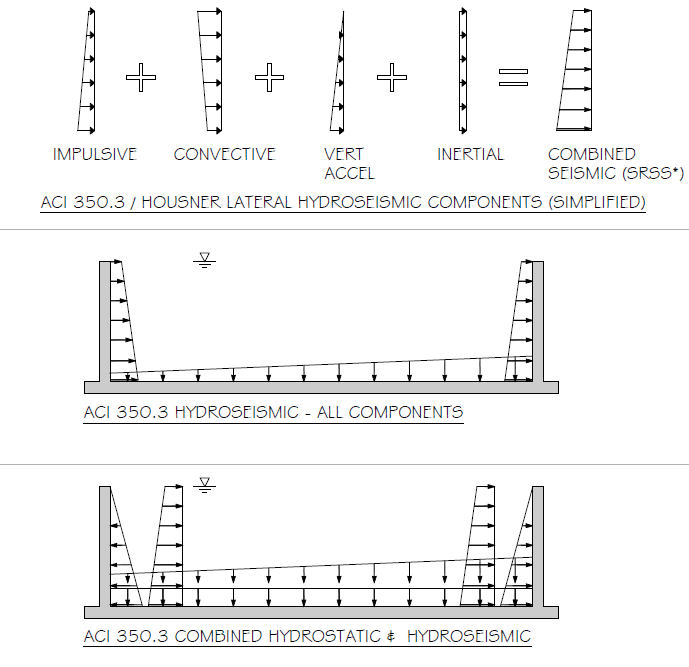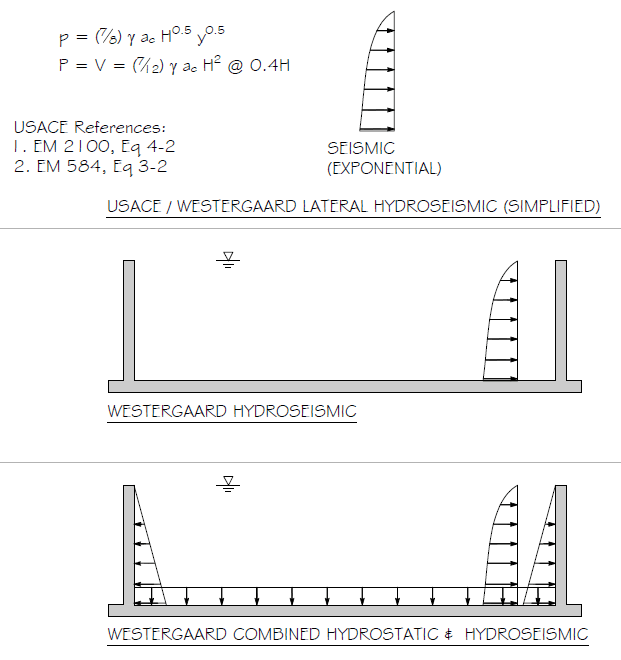ATSE
Structural
- May 14, 2009
- 594
To my structural friends experienced with seismic / hydrodynamic loading on concrete walls using both Army Corp approach and ACI 350.3 approach.
Comparing the USACE / Westergaard ("Army Corp") equations for seismic hydrodynamic loading on walls vs ACI 350.3, the shear and moment results are substantially different.
See figures below.
For a moderately seismic site with 30' deep water and 250' long tank (or stilling basin or check structure bay...), the seismic component for ACI 350.3 is about 2 to 3 times larger than USACE / Westergaard.
Has anyone else run into this challenge? Inviting comments regarding any reconciliation for the large discrepancy in resultant forces.
ACI 350.3:

US ACE EM-1110-2-2100 / 584:

Comparing the USACE / Westergaard ("Army Corp") equations for seismic hydrodynamic loading on walls vs ACI 350.3, the shear and moment results are substantially different.
See figures below.
For a moderately seismic site with 30' deep water and 250' long tank (or stilling basin or check structure bay...), the seismic component for ACI 350.3 is about 2 to 3 times larger than USACE / Westergaard.
Has anyone else run into this challenge? Inviting comments regarding any reconciliation for the large discrepancy in resultant forces.
ACI 350.3:

US ACE EM-1110-2-2100 / 584:

